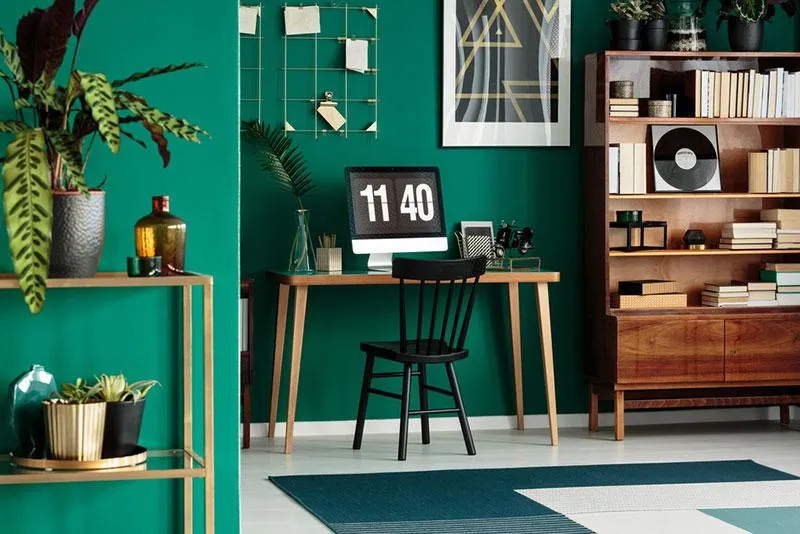What Is Design Thinking And Why Do You Need It?
In the world where almost everything has already been invented, many still dream of creating innovations and making changes. To get to that point, design thinking might go a long way in helping you find a new approach to old problems. Design thinking promotes collaboration and makes your thoughts flow in an alternative (but no less right) direction. At the core of it is innovation based on a new approach to solving problems.
In this article, we will introduce the concept and stages of design thinking and explain why a marketer, a copywriter and, of course, a designer definitely needs it.
What is design thinking?
Design thinking is a method of creating human-oriented products and services. It implies creative rather than analytical or critical approach and constitutes a complex process focused on clients and users. Essentially, it’s when one tries to research as much information about a user as possible, going from investigating some general characteristics and pain points to prototyping and testing the product by its future users.
In the 20th century, American psychologist Herbert Simon shaped the basis of design thinking in his book “The Sciences of the Artificial”. The concept was then further developed by a global design company IDEO, that created the Stanford d.school (design school). They outlined the pillars of the method and developed the five defining stages of design thinking in the Introduction to Design Thinking Process Guide.
7 design thinking pillars you need to know
- Show don’t tell. Don’t use words in places where you can use images. It is a fundamental design principle that also lies at the core of design thinking.
- Focus on human values. Quite often instead of “design thinking” people say “human-centred design”, which is the best way to explain one of the purposes of the method – designing for people.
- Craft clarity. The task of design thinking is to deliver and integral message and produce a holistic vision.
- Embrace experimentation. Design thinking promotes the process of creation by trials and errors.
- Be mindful of the process. To establish a holistic vision, one should have a mindful approach – set milestones and determine a final goal.
- Bias toward action. Although this design method is called “thinking”, it is totally about doing.
- Radical collaboration. The only way to create something innovative and groundbreaking is to collaborate with professionals with different views and backgrounds.
Once you have comprehended the pillars design thinking is based on, you’re ready to research on the main modes of the method. They will introduce you to the process of design from a totally different perspective and enrich you with multiple insights irrespective of your occupation. Whether stuck on an ongoing project or just starting a new one, try implementing the design thinking strategy mentioned below and see if it brings you results.
5 modes of the design thinking method
1. Emphasize
Human-centred design requires deep target audience research. You need to understand their way of thinking, emotions that guide them, find out their problems and pain points, and figure out what’s valuable for them. To achieve the primary goal, d.school suggests to observe users, engage with them and immerse in their lives.
In short, put yourself in the user’s shoes to move your product or service development in the right direction. As we’ve mentioned in the piece about the most common design mistakes, one should always remember that design is about problem-solving and a designer is a person who solves the problem.
2. Define
This mode is the stage, at which you withdraw your empathy findings, process and transform them into insights. You pack your project with meaning by answering related questions like “How can I help?”, “What is the focus?” and “What is the actionable problem statement?”. Develop your point of view that includes three constituents – a user, a need, and an insight – and you will avoid addressing the abstract problem.
3. Idiate
It is the intermediate stage, during which you explore the solutions for users. It is a creative process that implies techniques like brainstorming and mind mapping. In general, this is the stage when you develop as many ideas as possible in order to choose the best one, the relevance of which you will discover during the next two stages of prototyping and testing.
4. Prototype
Prototyping means testing your ideas into real life. At this stage, anything can serve a mock-up: notes, games and activities, an interface, or space. Among many reasons why prototyping is an integral part of the design thinking process is that you still can fail but it will be cheap. You can also test possibilities and explore multiple solutions. Most importantly, to successfully proceed to the next stage don’t spend too much time prototyping and always keep your user in mind.
5. Test
When you test, you have an opportunity to get feedback and later refine your solution. So, provide a user with a couple of prototype alternatives and ask him or her to test it in a real-life context. There’s also a rule of thumb that says: ”prototype as if you know you’re right, but test as if you know you’re wrong”.
Peculiarities of design thinking
It is human-oriented
A full-fledged synonym of design thinking is human-centered design, as it is based on deep empathy and understanding of the user’s need. During every stage of the method, one is tightly interconnected with a user.
It encourages experiments
Design thinking is a method that implies learning through experiments. Everybody makes mistakes and the most important thing here is to make conclusions. Sometimes, the most obvious or extreme thought serve a great basis for design solutions.
Allows for flexibility
It may seem that the design thinking process is well structured but indeed it is also very flexible. Depending on your aims, experience and kind of product, you can merge the components, go back to the stages you’ve already passed or even start from scratch as many times as you need. Design thinking is a creative method, which you can boost with a variety of instruments:
- mind maps
- visualization
- storytelling
- mood boards
Whether you’re a marketer, a copywriter or a designer, design thinking method is full of insights for everybody. Its main advantage is that you don’t need any particular skills for its implementation. Read some books on design and creativity, write down the ideas, get your imagination going and start creating amazing solutions to everyday problems (big or small).













